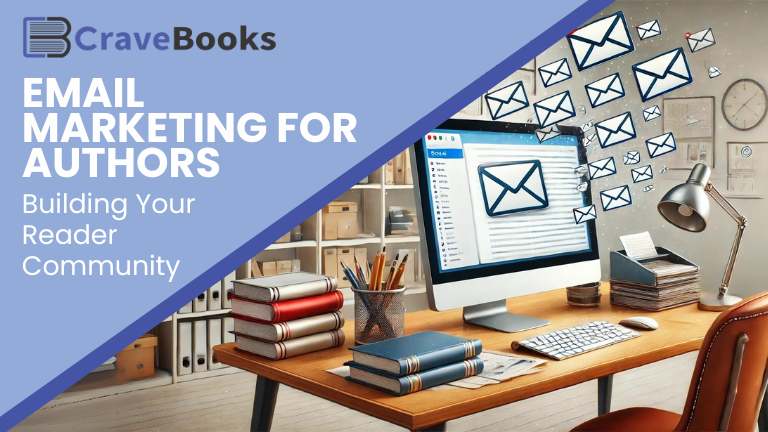Email marketing may be the most important and best use of your book marketing resources, including time, energy, and money. Email marketing for authors involves building your email list—the emails you collect with permission from readers and potential readers—which is one of your most valuable book marketing tools.
Why you need an author email list
Unlike social media accounts, advertising companies, and pretty much any other third-party marketing services, as long as you backup your list, it can’t be taken away from you. Social media platforms can shut down and advertisers may go out of business. Even retailers are known for randomly closing author accounts. But with email marketing for authors, your email list is always available, even when you have to change service providers. Armed with that, you will always have a way to communicate with your readers, no matter what happens.
How to collect email addresses
- Reader Magnet: What is it? It’s a free digital gift you give to readers in exchange for their email address and giving you permission to send them promotional emails. Popular reader magnets for fiction authors are a short story or novella. If you don’t have time or availability to write one, send a sneak peek of several chapters of your upcoming book or digital artwork of your characters or a scene in your story. For non-fiction authors, a reader magnet can be a white paper, an essay, or something like “The Top 5 Ways to Overcome ______”, each relevant to your topic.
- CraveBooks List Building Giveaways: This promotion is a way to collect hundreds of reader emails through a book giveaway. Authors sign up based on their genre and agree to give away three copies of their reader magnet. Readers sign up to enter the giveaway, giving permission to share their email address with the participating authors.
- Automated Email Series: Also known as a drip campaign, this is content you create once that goes out to every new subscriber following rules you prescribe. For example, a “welcome” email goes out immediately on sign-up, then another email a few days later, and a third a week after that. This can be set up with your email service provider.
What about email frequency
Stay in regular contact with your subscribers. You might start out monthly to simply stay in touch so they don’t forget you. As both your email list and your backlist grow, the amount of news and information you have to share might as well. Keep in mind your time availability and what you can realistically do, but you can boost the frequency to bi-weekly, weekly, or even daily. You don’t want to spam your subscribers with irrelevant junk, but when they hear from you regularly and frequently enough, they’re more likely to remember you and watch for your next release or other book news.
Because we all receive so much email every day, it may be tempting to limit your emails to only when you have a new release. This can backfire. If readers only hear from you sporadically, they may forget they signed up for your list and report your email as spam, or worse, they may form the perspective that you only contact them when you want them to buy something from you.
How to create reader engagement
Like social media, follow the 80/20 rule. Use your email newsletter as an opportunity to connect with readers on a deeper level, not just a way to sell your book. Allow them to see you as a real person. This doesn’t mean you have to be super personal, but share things about you or your writing process that goes beyond, “Buy My Book.” This rapport will lead to them being more likely to buy your book, even pre-order it when available.
If you can only do one thing for your book marketing, having an author newsletter you send out regularly to readers is where you should focus your time and energy.




